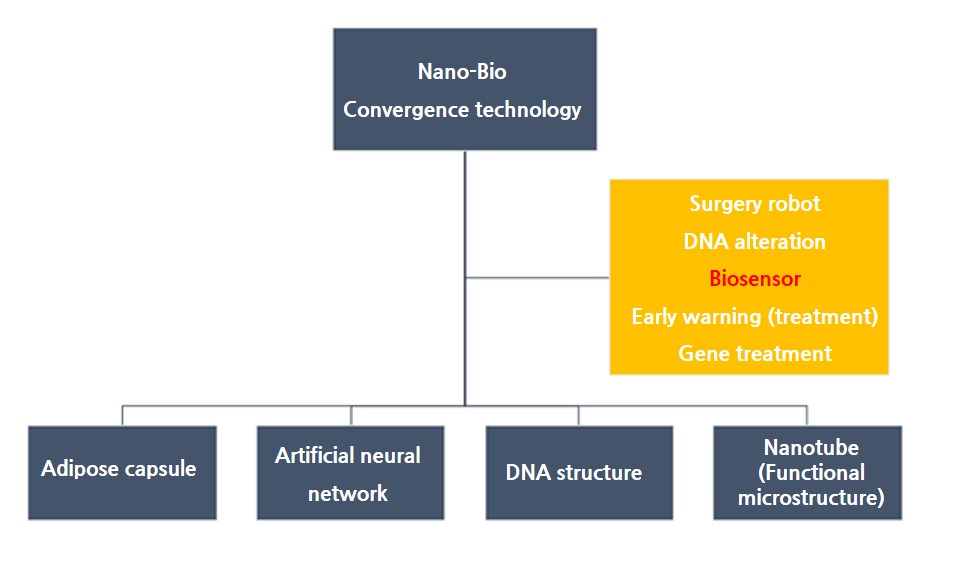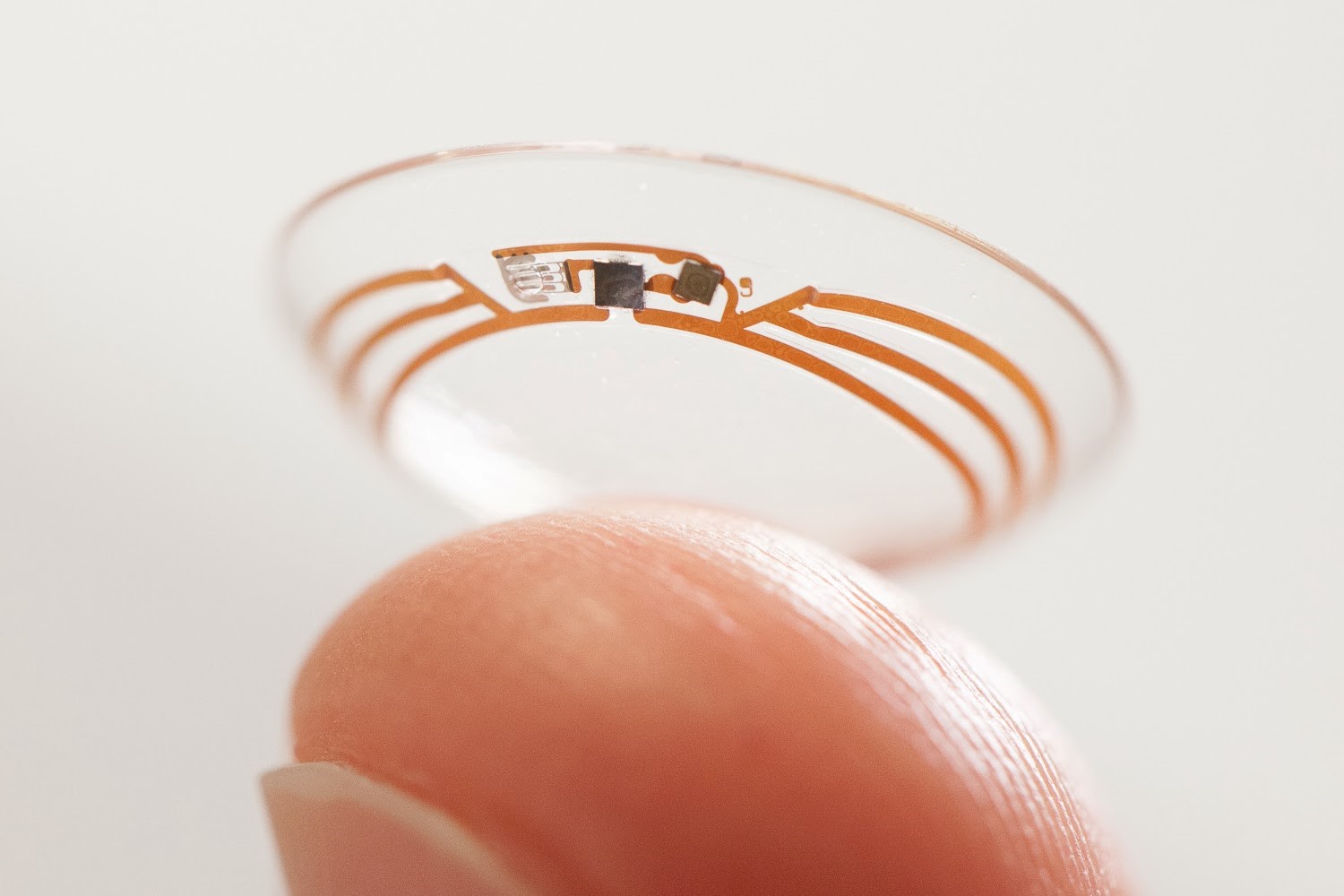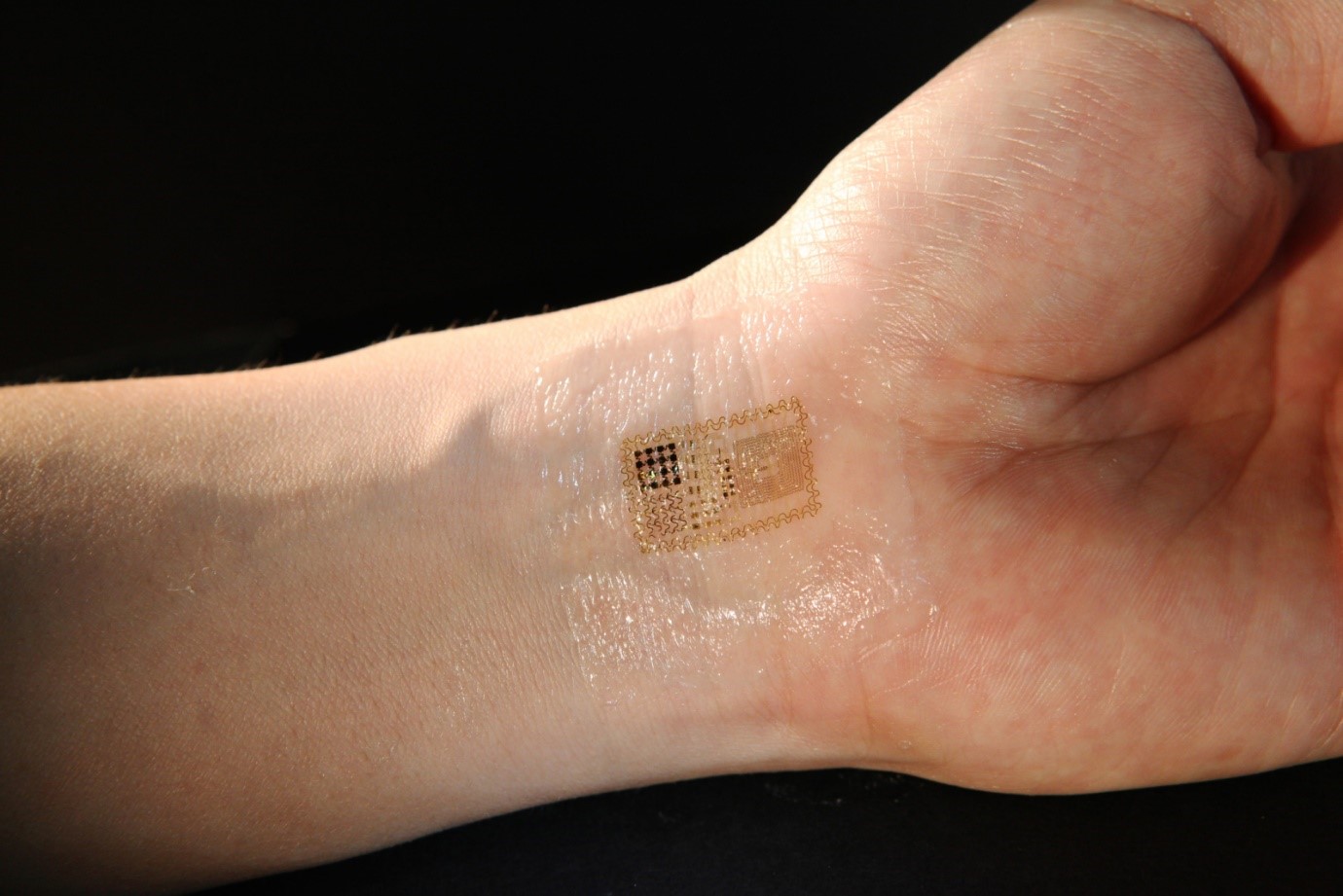Trend of Nano-Bio convergence technology, and the biocompatibility of Graphene

[Figure1]
In 2004, after the discovery of a new material called Graphene in the nano (chemical) field, steady research and development has been conducted in the IT field, such as transparent electrodes, flexible display, secondary cell, barrier film and more. As is confirming this, various application ideas and products are being reported.

[Figure2]
However, there have been suggestions that there have been no significant research results in the Bio field. Although there is potential for numerous ideas and possibilities, there has been a lack of application development to match. It is expected when application in the BIO field kick-starts, the relevant market will grow exponentially. For this reason, active BIO research and development is being conducted throughout the world.

[Figure3]
In USA, Harvard and Berkeley universities are in the process of developing protein and DNA combination method using the surface characteristics of silicon nano wire. In Europe, Germany is researching tiny nano robots which can enter blood vessels and remove fat on blood vessel walls, and Sweden is putting effort into developing micro robots which can move cells to a desired location and catch bacteria. Notably in England's research on artificial cell membranes using Graphene has been in progress has been assessed to have set the technological basis for manufacturing a Graphene/lipid based biosensor.

[Figure 4. Bio friendly material technology for replacing damaged hard tissues such as bones, teeth and cartilage]
Graphene is emerging as a new surface which can imitate and be assembled into cell membranes of the human body, with potential as a sensor for understanding biological processes, disease detection and drug screening. The research team has shown that the Graphene model can provide a new surface to assemble the cell membrane. By applying electric charges on lipid, movement of the Graphene to the lipid can be achieved, therefore altering Graphene's doping level. All this is believed to be able to be used for producing a new Graphene/lipid based biosensor
Biosensor technology is one of the Nano-Bio convergence technologies and it’s market, including the blood sugar sensor, is said to be worth KRW 1 trillion annually. Recently, biosensor nanotechnology utilizing gold nanoparticles is being commercialized.

[Figure 5. Contact lens which can measure blood sugar through tears, under development by Google. Photo source: Google]
The biosensor can be said to be the core part of U-Healthcare and the biosensor market is expected to take up a large portion of the Home Diagnostics field. The Home Diagnostics field needs interface between easy diagnosis method, minimally invasive diagnostic technology and mobile technology, and there seems to be a urgent need for developing a U-Healthcare biosensor of enhanced sensitivity, label-free diagnostic technology, biocompatibility, minimization of nonspecific combinations and very small size. When this is possible, it is expected that its influence on the market will be 10 times the current status.
From these, the functional biocompatible nanostructure surface improvement technology is aimed at minimizing the side effects and includes Blood vessel congeniality of treatment/rehabilitation implants, Decay resistance, Wear resistance and Cell adsorption/inflammatory response.

[Figure 6. Biosensor which is attached to the body to diagnose health, under development by Apple. Photo source: 9to5mac]
In 2008, after the first application of Graphene oxide as a nanotransporter for delivering drugs, cases of more varied biological application have been reported. In addition, various coating technology is being researched, led by various developed countries such as USA, Europe and Japan, with new surface coating materials progressing towards commercialization.
The Graphene oxide, producing BIO implants
Research teams of MIT and Harvard have verified that Graphene reacts very similarly to other body implant materials that are known to be safe to the human body. The research team injected Graphene oxides between the membrane tissue of animals and below the skin of mice to alter the quantity of oxide used in the synthesis. The purpose of this research was to observe the relationship between the materials’ oxidized state and the biocompatibility. It was observed that by reducing the degree of Graphene oxidization, the cells were infiltrated and purified at a faster rate and after injection the Graphene oxide particles combined to form the same material as the implants within the mouse.
The research team addressed the concern of stability issues due to the large surface area and small size of Graphene oxides and verified that the Graphene oxide responded in an identical fashion with body implants that are known to be safe in the short term. Reducing the degree of oxidation of Graphene oxide enabled faster absorption of the material by the immunocyte and faster removal from the body. These research results were stated to be fascinating, and can enhance the suitability of the Graphene oxide in the biomedical field.
It is now possible to investigate medical devices/implants using the unique characteristics of the Graphene oxide and it is expected that it can be applied appropriately to next generation biosensors, insertion-type electronic devices which and supports for tissue engineering.
Graphene, preventing bodily infections
In USA, it was discovered that Graphene had a sterilization effect on bacteria. Columbia University’s team led by professor Lu Heung Ju found that Graphene possessed a sterilization effect by infiltrating the cell membrane of bacteria and forcing a large number of phospholipids forming the membrane out of the cell. Results from observing through a transmission electron microscope showed that Graphene cut into the cell membrane like a razor to destroy both the internal and external walls. The reason that Graphene displayed strong destructive properties toward cell membranes is the strong dispersion force between the Graphene and lipid molecules, which causes large number of phospholipids forming the bacterial cell membrane to be pulled outside the cell following the Graphene. The powerful dispersion force between the Graphene and phospholipids is the result of the strong hydrophobic interaction between the two substances. It is expected that this property can be used in disposable band-aids, protective gauze and more.
It is hoped that by applying oxidized Graphene/nanosheet directly on the area of injury the patient can be protected from infections without the need to apply antibiotics.
Graphene nerve cell brain implant
A CS Nano, a scientific journal in the field of nanoscience, reported in a new research that Graphene is capable of successfully connecting with neurons whilst fully maintaining interface with the nerve cells.

[Figure 7. Photo source: future timeline]
Professor Laura Valery, the head neuroscientist of this research, did not utilize peptide coating used for nerve adhesion in the past but instead directly connected the Graphene and the neuron. Afterwards, the neuron's ability to generate electrical signals showing brain activity was tested. This is a first structural research about neuron synapse using non-coated Graphene. Using electron microscopes and the immunofluorescence method, it was observed in a culture of mouse brain cells that the neurons was able to connect aptly to the non-processed Graphene electrodes, transmitted healthy and regular electrical signals and did not show negative neuroglia responses.

[Figure 8. Photo source: future timeline]
The Graphene electric charges which is recognized in the brain is expected to help recover the sensory abilities of those who suffer from perception-motor disorder like amputation patients, paralysis patients and those with Parkinson's disease.
The tungsten or silicon based electrodes currently used in the neuron interface too often lost the signal and a rigidity stopping the electrode from moving was caused by the scar tissue resulting from insertion of the electrode, interfering with the natural movement of the brain.
In comparison, the Graphene's conductivity, flexibility, biocompatibility and body stability have shown to be excellent.
It is hoped that Graphene will open the way for brain implants that are free from side effects and possess ultra sensitivity for using and controlling the brain.
As shown, worthwhile research results in the Graphene-BIO field have been shown throughout the world.
As mentioned above, recently materials for artificial bone, cartilage, blood vessel, bladder, skin, muscle and more using tissue engineering technology is in development, and related human tissues demands biomechanical technology which allows inspection of specific strengths and structural characteristics.

[Figure 9]
Conclusively however, the most important factor in the BIO field is biocompatibility. The new material must not be toxic to the inside or surface of the human body. If Graphene proves not to be harmful to the body in the long term whilst maintaining its original capability, it will play an important role as a bodily material in the future. Should this come into fruition, it is expected that within 5 years, a BIO market of significant scale will open.
Graphene Square
[Source 1]
KISTI Mirian Global Trend Briefing
http://mirian.kisti.re.kr/index.jsp
Original : http://www.rsc.org/chemistryworld/2013/07/antimicrobial-Graphene-band-aid
Orignial : http://nanotechweb.org/cws/article/tech/60895
Orignial : http://phys.org/news/2013-10-artificial-cell-membranes-Graphene.html
[Source 2]
Park Yeong Sook UN Future Forum
http://harmsen.blog.me/
Orignial : http://www.futuretimeline.net/blog/2016/02/2.htm#.V7JsSeQkrIV
[Photo source 1]
https://9to5mac.com/2014/01/17/apple-continues-hiring-raid-on-medical-sensor-field-as-it-develops-eye-scanning-technology/
[Photo source 2]
https://googleblog.blogspot.kr/2014/01/introducing-our-smart-contact-lens.html



